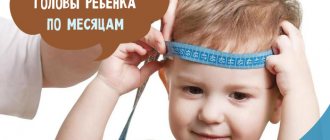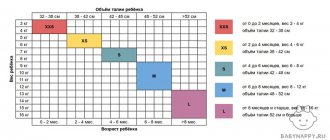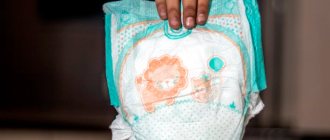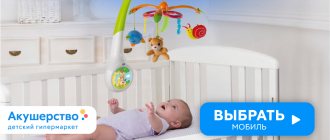How to choose?
On the modern market of beds for children, there are a huge number of different models and design solutions for both newborns and teenagers. You should take an extremely responsible approach to choosing a sleeping place for a child, basing your choice on the following criteria: safety, comfort, design.
Safety. This criterion is especially important when choosing a crib for a newborn. During the first year, the child learns to roll over, crawl, and walk.
The bed must take into account the growing needs of the child: have special sides, be stable, made of high-quality materials that are not so easy to break. The lines of the bed should be smooth. If this is a bed made of solid wood or veneer, then the coating should not emit any odor.
Cradles cannot be used after 6 months. Their parameters are not adapted for later use.
Physiological. The crib for infants should not be unbalanced, otherwise the baby will develop a “stagnant” effect, which can lead to the fact that he becomes torticollis.
Regardless of the child’s age, the sleeping area needs to be level. For hyperactive and easily excitable children, purchase a model with high heights so that the child cannot fall in his sleep.
It is better when the bed mattress is removable, it is easier to clean it from dirt, dust and dust mites.
Comfort. A crib is a special place where for the first time a child is left alone without parents with his own experiences and thoughts. It should be comfortable and conducive to sleep
It is important that nothing in it distracts from this physiological process: neither the color, nor the narrowness of the crib, nor the mattress, nor otherworldly noise (creaking, tapping of parts)
When purchasing bed models popular with girls, remember that caring for them is labor-intensive - they must be periodically washed and cleaned of dust.
Design. Children are very sensitive to the world around them
It is important that they are surrounded not only by functional pieces of furniture, but also by beautiful ones.
With a child over three years old, it is better to choose a crib together. So, he will learn to make his choice and will be able to reveal his preferences. He will feel confident in the crib that he chose himself.
Size is one of the most important factors when choosing a crib.
For newborns, cribs that are 60 cm larger than the child’s height are suitable. Cradles can only be used for up to 6 months, since by the age of one year the child’s height can already reach 90 cm. In the future, you need to choose a crib based on 10-15 cm per year and the period for which it is purchased.
Please note that newborn babies do not really like large beds. The baby will feel uncomfortable in the playpen. Therefore, it is recommended to make rolls from the blanket to limit its movement for up to four months. Thanks to them, the sleeping place will resemble a nest in which the baby will be cozy and safe.
Sizes of different types
A small cradle, which is used for sleeping a newborn, has standard dimensions of 97*55 cm, the height varies depending on the model and is adjustable. Baby cribs are neat in design and small in size, but after six months a standard child outgrows such a crib and requires a new one. The cradle will be appropriate for a small apartment and for those parents who are willing to spend money on children's furniture and replace it in a timely manner. It is convenient to use a lullaby in the parent’s bedroom in the first six months of a baby’s life, when you want to maintain the “mother-baby” connection for as long as possible.
The attached model will become a continuation of the parental bed, where the newborn can sit comfortably. The dimensions of the side bed are standard 90*50 cm, which is slightly smaller than the classic model
It is important that the attached model has the ability to adjust the bottom to “fit” the height with the parent’s bed, but it is better to select in advance the model that fits perfectly with the adult’s. Another important point is the presence of elements for attaching a baby crib to an adult, which will guarantee the child’s safety while sleeping
A classic crib for newborns has standard Russian dimensions of 120*90 cm, in Europe these measurements are 5 cm larger - 125*95 cm. Classic cribs are distinguished by the presence of a swing mechanism - a pendulum (it can be longitudinal or transverse) or its absence, then the bed has legs and removable wheels or runners.
The classic model, as a rule, has two bottom positions, a slatted bottom, the ability to lower the front side, some models have an additional drawer at the bottom.
Transformable cribs will be a good investment in a child’s future: it will be useful for a newborn baby and will serve until he reaches 7-8 years of age (until the child outgrows the product). The transforming bed has a built-in chest of drawers and a changing table, its standard size is 140*70 cm, the sleeping place for a baby is 90*60 cm with the possibility of increasing it. After the original appearance of the product becomes too small for an older baby, the chest of drawers with the changing table is removed and the bed is expanded.
There are models of children's furniture for twins or twins, which are a product with parameters of 130 * 125 cm. The bed will last until about 3 years of the baby's life, then you will have to replace it with a spacious two-tier model or separate products for each child.
In addition, there are playpen beds with different sizes, which are a playpen in the lower part and a sleeping place in the upper part. The sleeping place is small and will be used by the child for up to a year, after which the baby is unlikely to fit there.
Beds of non-standard sizes are unique in their design, for example, round and oval models with dimensions of 78*76*81 cm (length*width*height), which “grows” in length up to 128 cm. Round transformable lullabies for babies of non-standard sizes in most They increase in length, which allows the use of an expensive model for up to 5 years.
It is worth noting that the parameter 120 * 60 cm, used to indicate the size of a classic-shaped children's bed, indicates the dimensions of the bed; the crib itself can be 6-10 cm larger due to the presence of additional elements - sides, sides. This applies not only to the mentioned model, but also to some other types of children's furniture.
Safety
The main safety factors for a child's bed are provided by:
- high placement of the mattress base (grid) guaranteeing free and comfortable servicing of the sleeping baby by parents;
- Let's call for enclosing sides or bars to prevent the child from falling off the mattress during restless sleep.
dizajn-komnaty-s-dvuhjarustnoj-krovatju01 dizajn-komnaty-s-dvuhjarustnoj-krovatju02 dizajn-komnaty-s-dvuhjarustnoj-krovatju03 detskaja-krovat-standartnyh-razmerov10
It is especially important to have a fence for a baby who is learning to stand up. It serves as a support, clinging to which to develop the technique of climbing and maintaining balance.
After the child begins to sleep peacefully and confidently crawls and stands on his feet, the fence can be removed.
The main safety requirements for the design of sides are:
- dimensions length and height, which are chosen taking into account the age and character (restlessness) of the child - for a baby who has begun to walk independently, their length is usually equal to one third of the length of the bed;
- the stability and rigidity of the fence should prevent it from spontaneously tipping over or opening under the weight of a child;
- The ideal materials for the manufacture of sides are natural wood, upholstered in environmentally friendly drapery fabric with filler;
- All fences must have rounded corners and contours and blunt edges.
detskie-krovati-standartnyh-razmerov14 detskie-krovati-standartnyh-razmerov13
Standards and sizes of children's beds
The dimensions of children's beds are determined not only by age, but also by the design of the models
Today in Moscow you can purchase various options - but no matter which one suits the taste of parents and children, it is important first of all to pay attention to the sizes
Children's beds from 0 to 3 years
Manufacturers offer models of various configurations for children from birth to 3 years. For a standard crib, clear dimensions are established - from 60x120 cm, the maximum height of the sides is 95 cm. If the sides are lattice, the permissible distance between the bars is 7.5 cm.
Playpen bed
Safe and functional bed models for babies, in which they can play and relax even as they grow older. As a rule, they have fully mesh or fabric sides with mesh windows on a lightweight metal frame. The recommended minimum dimensions of such beds are 120x70 cm.
Add-on bed models
A distinctive feature of side beds is a removable sidewall, in the absence of which it can be placed close to the parents’ sleeping place. As a rule, their dimensions are smaller than standard ones - width is about 55-60 cm, length - 90 cm, height - 30-50 cm, and the size of the sides is up to 80 cm
It is important that the height exactly matches that of an adult bed to avoid injury and discomfort
Dimensions of a children's bed with sides
Sides are an ideal option for little activists. The bed will serve not only children under three years old, but is also perfect for schoolchildren. In their sleep, many children can sleepwalk, fall, and twitch. The side is a universal solution for such situations.
Photo: Dimensions of a children's bed with sides 1650 x 880
The length of the bed is from 120 to 140 cm. The width is from 40 to 60 cm. The height of the sides is from 75-95 cm. The distance of the crib from the floor is from 30 cm.
The sides can be removable. This will enable the child to climb in and out of the crib independently. If the bed does not have a rocking effect, then you can choose an option with drawers inside. Then it will become 10-15 cm higher in size, and more reliable in design.
Transformable beds
Such models are a complex modular design, which, in addition to a bed, includes a chest of drawers, a changing table and drawers for linen. As the child grows, the sides are removed, the height of the base is adjusted from 30 to 50 cm, and the remaining modules turn into bedside tables and hanging shelves, without which the model for a baby transforms into a teenage bed. The dimensions of such furniture vary in the range of 160-200 cm in length and 60-80 cm in width, so a quality product can last 10-12 years, providing the child with the necessary comfort.
For preschoolers and schoolchildren
The sizes of bedroom furniture for preschool children and schoolchildren vary between 140-170 cm in length and 60-80 cm in width. In this case, the height of the head of the children's bed also plays an important role - it should protrude upward by at least 40 cm from the mattress, otherwise it will be uncomfortable for the child to settle down to sleep.
For teenagers
Teenage beds are almost the same size as adults - from 180 cm in length, from 80-90 cm in width with an average height of 50 cm. Buying a sliding bed can also be a reasonable solution, since the child continues to grow little by little until graduation.
Bunk beds
Children's bunk beds can be of two types:
- With upper sleeping and lower play area. The standard size of this model is 90x190 cm.
- With two sleeping areas. In this case, the length of the bed can be up to 200 cm and the width up to 110 cm.
The height of a bunk bed for children is a key selection criterion, which even affects the cost of products. Most models are made in the range of 1.5-1.8 m, although you can also find models 1.4 m high with a roll-out lower tier.
Custom beds
Models of non-standard beds include:
- Beds for twins
. Their standard size is 135x125 cm. Such beds are used until children turn 4-5 years old, after which they are changed to two single beds or a bunk model. - Designer models
. Beds in the form of cars, castles, ships, as a rule, have sleeping places that meet the standards. However, before purchasing, you must take measurements to be sure. - Beds of non-standard length
. Such models are often made to order for tall teenage children.
Standard wooden crib
The design features of different models may differ only in minor details. Wooden rectangular cribs with a moving handrail are deservedly the most popular in our country and abroad.
Standard sizes of the domestic model range:
- 120/60 cm.
- 140/70cm.
Common parameters of foreign models:
- 125/68 cm.
- 170/60 cm.
Russian manufacturers, as a rule, produce cribs with an adjustable bottom and height of the sides. This is a more versatile and comfortable option than the one offered by foreign industry. If you are planning to purchase a model from a foreign brand, at the same time solve the problem of competently selecting a non-standard children's mattress.
| You can find out what to give your child for his first birthday in this article. |
When is it time to change the bed?
Over the age of 18—before adulthood—a person, as a rule, “masters” at least three beds. First, a baby crib with high sides. The sides become lower as they grow older, then disappear completely.
Usually by the age of three the question of purchasing another bed is raised. Sometimes this can be a whole set of furniture designed to serve the child for the next ten years.
In adolescence, it's time for the next purchase. This is either a teenage bed of quite a “respectable” size, or a furniture set that is no longer of a “children’s” design
Let's consider the generally accepted gradation of this children's furniture by age and size.
Europe, USA, Russia: standards of different countries
Manufacturers of children's bedding focus primarily on the domestic market and adjust the parameters of their products to generally accepted sizes. In the case of Chinese products, it is difficult to talk about any standards, so it is better to look for information with numbers on the packaging. A table will show the standard sizes of bedding for a crib, which groups the options used in different countries:
In any case, before purchasing, you should measure all the bedding yourself, because when you choose the sizes of children's bedding for a crib, the standard is a conventional guideline.
When you buy a baby set from a European manufacturer, keep in mind that it may not contain a pillowcase, since the medicine of these countries strongly does not recommend that newborns sleep on a pillow. In American sets, a surprise can come from the duvet cover, or rather, its absence. Instead, you will be offered a second sheet, which should be attached to the blanket using buttons or a zipper.
A deviation of 5-10 cm, of course, is not critical, but a loose blanket or sheet can cause inconvenience to the baby and disturb his restful sleep. The most competent approach would be to think about the parameters of linen at the stage of purchasing bedding. Find out what sizes the brand you like produces and find the right pillow and blanket so you don't have to deal with the hassle of upgrading your bedding in the future.
Standard
A child's very first piece of furniture is a crib.
Therefore, it is important to take into account the features of all types of children's furniture
The following models of cribs are considered standard: crib-cradle, add-on model, playpen, transforming crib and loft bed.
Cradle
Since ancient times, the cradle bed has helped our ancestors raise children. The advantages of this crib are its compactness, ease of motion sickness, and the ability to be moved from one room to another. But this furniture can only be used until the baby begins to roll over and sit down, otherwise there is a risk of him falling.
Previously, bassinets were used for a longer time, but the baby was swaddled tightly. In fact, the baby was immobilized. This was done in order to help the young mother have time to do some other chores around the house: sew, knit, cook something.
Its size usually ranges from 40 cm in width to 90 cm in length. Height - from 50 to 90 cm.
Side bed
Side beds, compared to their analogues, have their advantages.
Like the previous model, its use is short due to its size (up to two years, if the size of the crib allows the baby to develop). The width of the side crib varies from 55 to 60 cm, and the length from 90 to 120 cm, the height of the model does not exceed 80 cm.
Most crib models are equipped with clamps that allow you to attach them to your parents' bed. Depending on the level of the parents' bed, the crib can be raised or lowered from 30 to 50 cm from the floor level.
There are models that provide for the attachment of a side wall, but then the baby’s sleeping place will be reduced by 10 centimeters.
Playpen bed
The most popular model is considered to be a playpen bed, which, due to its size and parameters, can be used until the child reaches the age of three. The parameters of this bed model are regulated by GOST.
It is designed not only so that the child can sleep comfortably, but also for his first steps. Along the perimeter of the crib there are sides that the baby can cling to to roll over or stand up. The child can play independently, while it is good to see what his mother is doing. There is a distance between vertical fences (up to 7.5 cm).
Depending on the activity of the child, the bottom of the bed can be lowered, so parents do not have to worry about the baby falling out of the crib. Most models have motion sickness mechanisms and are equipped with linen drawers.
Its size is most often 120 cm in length and 70 cm in width.
Transformable bed
- This is a whole furniture set, which includes a crib, a chest of drawers and linen drawers. As the child grows up, the chest of drawers can be used as an independent piece of furniture: a bedside table, a table, a cabinet.
This crib can also be designed for an older child up to 10-12 years old. The length of the bed can be from 140 to 180 cm, and the width is usually 60 cm.
For children, it is preferable to purchase wooden beds (made of solid wood) rather than beds made of plywood or chipboard. This is especially true for children aged -12 years, which is associated with their increased activity.
Single
For school-age children, it is better to purchase model beds. In size, they may not be inferior to adult beds, but they differ in the requirements for the quality of materials used and design.
The standard size of a single bed is 100 cm wide, 190 cm long.
Bunk and loft beds
For families with two or more children, in order to save sleeping space, you can consider the options of loft beds. But the use of these pieces of furniture is only possible for children over 7 years of age.
In order for a child who sleeps at a height to have enough air, the second tier should not be right up to the ceiling. The stairs used for ascent and descent and the ceiling of the second tier bed must be safe and durable
A child who sleeps at a height can jump on the bed and stand up, so it is important that the model provides for all options for its non-intended use
A loft bed is convenient because it saves playing space. In such models, as a rule, a closet and linen shelves are provided. Below there may be a workspace in the form of a desk or.
This bed option will be interesting for teenage children. This is a room-within-a-room option that teaches a child to organize his space wisely and orients him to study. The child seems to be in his own world.
The size of bunk beds and loft beds varies, but for models for adult children it is usually the same as for a single model - 100 cm wide and 190 cm long.
Manege
It is a structure consisting of a frame and a platform, fenced around the perimeter with textile walls.
Advantages:
- ease of assembly and maintenance;
- mobility;
- versatility: combining the functions of a crib and play space;
- compactness when assembled, which allows you to take the playpen on trips;
- The set includes a mosquito net, an educational play mat, and a removable changing board;
- adjustable bottom height;
- variety of shapes, materials, configurations.
Flaws:
- instability;
- no motion sickness function;
- limits motor activity in older children;
- big size;
- Weight restrictions: a standard playpen bed is designed for a child’s weight up to 10 kg.
Children's bed: choose the size
Children's experts recommend choosing bed sizes based on height. The length of the product for an ordinary person is height plus thirty centimeters. For a child, the length is calculated with a decent reserve: the baby’s height plus twenty to twenty-five centimeters at each end. A sleeping place that is too small or the internal volume is “butt-to-tail” will not be comfortable, as a result of which the child will be forced to lie in an unnatural position, and he will not be able to fully rest until the morning, which will affect his psychological state.
A huge sleeping place seems uncomfortable to most children, and sometimes activates a feeling of anxiety and danger. On a wide, long lounger, it is possible to fall asleep next to the mother, in which case the child will feel serene, but on the parents’ huge sofa, the baby usually spins around for a long time and cannot fall asleep.
In accordance with GOST, the sizes of children's beds must correspond to the list below:
- cribs for a child under three years old: the sleeping area must be one hundred and twenty by sixty centimeters, at the same time, the maximum height of the sides should not be more than ninety-five centimeters. The upper position of the bed is limited to fifty centimeters, the upper – thirty centimeters. For Western brands, bed sizes are usually increased by five to ten centimeters around the perimeter;
- children's beds up to seven years old: the optimal length will be one hundred and forty centimeters, the width will be sixty centimeters, the height of the lounger from the floor covering will be thirty centimeters;
- children's bed for a schoolchild: the height of the lounger is forty centimeters, the length is one hundred and sixty centimeters, the width is eighty centimeters;
- bed for a teenager: the height of the lounger is fifty centimeters, the length is one hundred eighty centimeters, the width is ninety centimeters.
Standard dimensions
In order for your sleep to be sweet and beneficial, you need to choose the right crib. Its size largely determines the quality of sleep. To understand what size furniture is suitable for a child of a certain age, you need to familiarize yourself with the standard parameters.
- Cribs for newborns 80x45 cm. These sizes are applicable for cradles, mobile models and cradles. This is a European standard. This space will be enough for the baby to sleep peacefully, which takes up the lion's share of time in the first weeks of life. Domestic manufacturers offer furniture with dimensions of 80x50 and 90x60 cm.
- Baby crib. This is a more profitable purchase: a baby can sleep in a crib for at least one and a half years. The width of this option is 60 (70) cm, and the length is 120 (140) cm. This bed is practical and most often has a bottom that is adjustable in height. It can be lowered as the baby grows.
The sides also drop down. Size 140 by 70 cm is suitable for a child up to 3-5 years old. Parents will not have to worry about the baby, he will not fall and sleep will be comfortable.
- Transformer. This model of a sleeping place has standard dimensions - 160x70 cm. The dimensions, which are larger than usual, are due to additional removable modules, which are subsequently used as independent interior items. This is a chest of drawers with a changing table.
Such cribs are attractive not only because they have a size of 160 by 70 cm, but also because they have a drawer underneath for linen and bedding. In some versions, the size can be increased to 80x160 cm. But domestic manufacturers present models of 70x160 cm.
- For preschoolers. These cribs have a lot of variations in shapes and designs. But the sizes still remain standard: 180x80, 180x90 cm. This is quite enough for a sound and healthy sleep.
The baby will be comfortable, not cramped and not too loose. For children from 1 to 3 years old, models measuring 160x80 cm are suitable.
- For teenagers. Bed sizes for children over 10 years old may vary in both length and width. But the standard dimensions remain 90x200 cm. For those who want to create space and a real royal bed for their child, manufacturers offer beds measuring 120x200 cm. Believe me, your child will appreciate these dimensions.
These are the basic standards for each age. When choosing a bed for a child, you should focus on the growth and wishes of the baby. Perhaps your child likes to sleep freely, or maybe, on the contrary, he likes compact furniture.
How to choose a transforming sofa
When buying a sofa that transforms into a bunk bed, it is very important to pay attention not only to durability, but also to its level of safety, as well as the weight that the sleeping area can support. It is desirable that such a design has protection against unplanned collapse. This is especially important when a child uses the sofa.
This is especially important when a child uses the sofa.
And for an adult, this level of protection would be useful.
This is especially important when a child uses the sofa. And for an adult, this level of protection would be useful.
It is desirable that such a design has protection against unplanned collapse
This is especially important when a child uses the sofa. And for an adult, this level of protection would be useful. It is desirable that such a design has protection against unplanned collapse
It is desirable that such a design has protection against unplanned collapse
This is especially important when a child uses the sofa. And for an adult, this level of protection would be useful.
Such furniture must have strong fastenings for the entire structure, including mattresses. Many models have wall mounts. This, of course, is not always convenient, but it is a good guarantee of safety.
On a bunk bed there is always a risk of falling from the top floor, so a plus for such a sofa will be the presence of guards that will prevent the sleeping person from falling.
Another important criterion when choosing such a sofa should be the simplicity of the mechanism for both disassembly and assembly. This is what will ensure the ease of use of this furniture. Obviously, the easier it is for you to handle the mechanism of the sofa, the more fun you will have. There are sofas on sale that can be folded out very simply.
Please note that in modern models, stairs with flat steps are mainly found. This type of ladder is safer for climbing, although it is not as convenient as the inclined ladder used in older models. You should pay attention to the fact that the ladder in such sofas is foldable; any defects or cracks are not allowed on it
You should pay attention to the fact that the ladder in such sofas is foldable; any defects or cracks are not allowed on it
The upholstery should match the interior of your room and its purpose. Don’t forget that for a sofa that will often be sat on, it is better to purchase replacement covers that will be easier to chemically treat. This way, you can protect your furniture from aging, stains and wear too quickly. Thus, the furniture will last you much longer.
You need to purchase a bed based on the height and weight of the intended owner. Not every structure can support a certain weight. Don’t forget that if you plan to put a sofa in a children’s room, then you should take a model that is taller than the child’s height
It is also important to pay attention to the height of the furniture. The location of the second berth too high may not be very comfortable, and in the worst case, even dangerous. On the contrary, placing the same place too low can cause discomfort to the person sleeping below
On the contrary, placing the same place too low can cause discomfort to the person sleeping below
On the contrary, placing the same place too low can cause discomfort to the person sleeping below.
How to choose the size of a children's bed?
Do you want to buy a children's bed, but are you worried that it will be too big or small for the child, or will take up a lot of space? We hope that our tips will help you choose the right children's bed:
- First you need to decide where the bed will be and measure the free space. The dimensions of the bed are larger than the size of the sleeping place; in addition, there may be uneven walls in the room, and therefore we recommend adding 10 cm in length and width to the size of the sleeping place to determine the required space.
- After that, choose the size of the bed, focusing on the free space, height, age of the child and his preferences:
- 70x160 cm is a small bed for children from one year old, it will be cozy for the baby, and it can easily fit in any room. A child can sleep in such a crib for up to 10 years.
- 80x160 cm - a more spacious bed, which will be comfortable for fidgety kids who fidget in their sleep.
- 80x180 cm - the average bed size can be recommended for children from 3 to 13 years old.
- 90x180 cm is a more comfortable option; the mother can lie next to the child and read a fairy tale.
- 90x200 cm – large bed, full adult size. A grown-up “baby” will fit on it even at 21 years old, and a smaller child will be able to put all his teddy bears.
This table will help you roughly figure out how tall your child will be at a certain age:
3. When choosing a bed size, also take into account the need to buy a mattress; you may have to change the mattress during the life of the bed, so you should not choose a too “exotic” size.
4. For loft and bunk beds, you need to take into account the size of the stairs, which also takes up free space, and you may have to choose a bed narrower than originally planned in order for the children's bed to fit in the room.
Among our beds you can choose one suitable for children of any height and age - from 1 to 21 years. But if you haven’t found the size you need, write and we will make an exclusive bed for you in individual sizes.
Standard crib sizes
Modern realities are like a colorful music video. Parents run to work, and after work they need to “redo” many everyday tasks. As usual, there is not enough time for everything. How can you keep track of your child? But there is no need to worry too much, because most problems can be solved with the help of a playpen crib. Combining a play space and a comfortable sleeping place for small children is a brilliant idea from the developers of innovative children's furniture. In the playpen, babies can spend most of the day and night time, freeing parents from unnecessary worries.
Mattress for a child's bed
According to the recommendations of pediatricians, the correct choice of mattress for night rest is of particular importance for the formation of correct posture and the structure of the spine. Therefore, most experts recommend using orthopedic mattresses for children under 14 years of age, even without defects in the formation of the skeleton. Currently, cribs can be equipped with anatomical or orthopedic mattresses, which have a fundamental difference:
- an anatomical mattress copies the shape of the sleeper’s body during sleep, and the best models “envelop” the baby’s body, changing its shape when he turns over or changes his sleeping position;
- An orthopedic mattress provides support for the spinal column in the desired position during sleep.
detskie-krovati-standartnyh-razmerov11 detskie-krovati-standartnyh-razmerov10
On a note! Recently, most manufacturers of sleeping places for children have been producing orthopedic mattresses, which additionally have an anatomical function.
When choosing a mattress, you should be guided not only by its functionality, but also by the age of the child, as well as the size of the mattress model and the materials used to make it. Depending on age, when choosing a specific model, you should use the following recommendations:
- for a child aged three to six years, when the bone base of neither the neck nor the lower back is yet formed, but muscle tissue is intensively growing, it is advisable to purchase springless (with filler) models of medium and high rigidity;
- a child aged six to twelve years can purchase a medium-hard mattress with independent spring blocks;
- Children from the age of twelve can purchase both spring and springless products of medium hardness.
When choosing a springless mattress, you should pay attention to its contraction and the filler used. The best are considered to be combined fillers based on latex and coconut fiber or polyurethane foam and coconut coir.
The best option is to choose a product that has a “memory effect.” In addition, if the mattress is purchased separately, it should be equipped with an easily removable cover made of easily washable fabric. It is optimal to purchase a cover made from polyester-based jacquard fabric. After several machine washes, calico and cotton covers lose not only their appearance, but also their functionality.
Basic requirements for children's bedroom furniture
The crib is the place where the child spends most of his time. Based on this, it is necessary to create all conditions for his proper rest, growth and development.
The following requirements apply to bedroom furniture for children:
- Ecological cleanliness. Materials must not emit harmful substances.
- Light weight if you plan to move the crib for a newborn around the apartment.
- Suitable for height and age. The size of the crib must be sufficient to ensure normal sleep and movement in the internal space.
- Convenience for parents. Caring for newborns requires a lot of time and effort. The ergonomic design will help save them.
Safety
The safety of children's furniture is determined by the following criteria:
- The height of the base on which the mattress is placed. This ensures ease of child care.
- The height of the sides prevents falls during active games or restless sleep.
- Stability of the structure. It should be of a shape that would prevent it from being tipped over by a child when rocked or accidentally pushed by an adult.
- No corners or sharp protruding parts. All edges must be rounded and well polished.
- The strength of the sides for a crib. These fragments are equipped with strong jumpers and reliable locks that prevent opening due to vibration.
Frame material
The best option for making furniture is considered to be materials of natural origin. The best solution is solid wood that has been treated with antiseptic agents.
Preference should be given to the following breeds:
- spruce;
- pine;
- larch;
- oak;
- beech;
- maple;
- ash;
- cedar.
You can save money by purchasing a product made from budget materials, which include laminated boards made from sawdust pressed with lignin. In addition, their environmentally friendly vinyl-based plastic structures have become widespread.
When choosing a bottom, it is better to choose a lattice structure that provides good ventilation of the mattress from all sides.
Mattress for a child's bed
The composition and thickness of the mattress affects the quality of sleep, the formation of correct posture and the structure of the spine. Pediatricians and neurologists recommend the use of orthopedic mattresses for children of all age categories. This also applies to those children who do not have musculoskeletal diseases.
There are these types of mattresses:
- anatomical type, adapting to the human body and evenly distributing body weight over the surface;
- orthopedic type, with independent springs, ensuring the correct shape of the spine.
The optimal choice is combined products that combine the advantages of both technologies.
Basic criteria for choosing children's beds
Convenience and safety are the most important parameters by which any children's furniture is selected. The crib is selected in accordance with the height and age of the baby, which allows you not to clutter the room with a product “for growth”, replacing it as needed. Baby sleeping furniture is equipped with a protective grille that prevents accidental falls to the floor.
When a child grows up (he is already 5, 7 or 10 years old), his attention is attracted by non-standard designs of cribs in the form of a car, an airplane, a boat, like a princess from a cartoon. In this case, the choice depends not only on the gender of the children, but also on the compliance of the purchased furniture with current standards
Security - what to consider
A safe product is one that cannot cause injury when interacting with it. The bed should not have gaps between the parts - a curious baby can stick a finger in there and painfully pinch it. Any roughness is also unacceptable - splinters are a very unpleasant thing for thin children's skin. All metal fasteners are masked with wooden or plastic plugs.
The distance between the rods of a baby crib is made no more than six cm. The sides are made removable and stationary. The bed should be quite stable - the narrower and higher the model, the more likely it is to tip over. Any sharp corners or various traumatic decorations are prohibited.
Material of manufacture
It is better to choose natural material from which the bed is made. The most popular wooden products are those that are not treated with paint, varnish, or carefully sanded.
This is especially important for young children - when the baby is teething, he chews everything, including the sides and bars of the bed. When purchasing, you need to request a hygiene certificate - the design should not have an unpleasant odor or any chemical impurities
When the crib is covered with paint, its composition must be fully described in the certificate - lead and other similar substances are unacceptable.
Models made from mixed materials - wood with MDF, fiberboard, chipboard are also often used, but you should clarify what class of materials are used. Wood in combination with metal and plastic are allowed, but they must be of very high quality. Such designs are painted in bright colors and have an unusual shape.
Dimensions
Standard sizes of a crib for babies up to 3 years old:
- domestic bed parameters 120x60 cm;
- European – 120x65 cm.
The size of 140x70 cm will allow the crib to be used for up to 5-7 years. Over time, this model can be easily transformed into a comfortable sofa. Parameters 170x60 or 160x60 cm, as a rule, are inherent in special transforming cribs.
Cradles with dimensions of 95x55 cm are suitable for newborns, but their functionality is limited to six months of age; after that, there will still be a need for a stationary model.
You can also choose an exclusive model (or make it yourself, a drawing and photo of the finished product can easily be found on the Internet) of non-standard sizes, but for such a crib you will have to sew all the bedding, including the mattress, to order. So the idea won't be cheap. Plus, you need to have some carpentry skills.
Color spectrum
Another important criterion that parents don’t think much about is the shade of the linen.
Carefully measuring the child’s height and the dimensions of the mattress, they manage to focus on safety and comfort, completely losing sight of the colors. Psychologists say that with the help of the right color scheme, you can grow a talented, self-confident person, and sometimes even cure mental illness
The effect of color on a child's body is indicated in the table below.
Table - Primary colors and their effect on the child’s body
| Bed color | Impact on the psyche |
| Green | - Helps relax; - promotes calmness |
| Red | - Causes aggression; - capable of oppressing |
| Yellow | — Improves mood; - causes joy; – provokes anxiety (if abused) |
| Blue | — Normalizes sleep; - promotes relaxation; - provides calming to the nervous system |
| Blue | — Eliminates tension (only as small accents); — helps to fall asleep (if the shade is not dominant); - depresses the nervous system (if blue is the main color) |
| White, beige | — Calms the nervous system; - ensures restful sleep; - leads to melancholy if not diluted with bright colors |
| Grey | — Promotes self-confidence (only small accents) |
| Brown | - Causes boredom; - can provoke apathy |
| Black | — Causes destruction of the child’s psyche (in large quantities); - neutral if used as outlines of a picture or small print |











